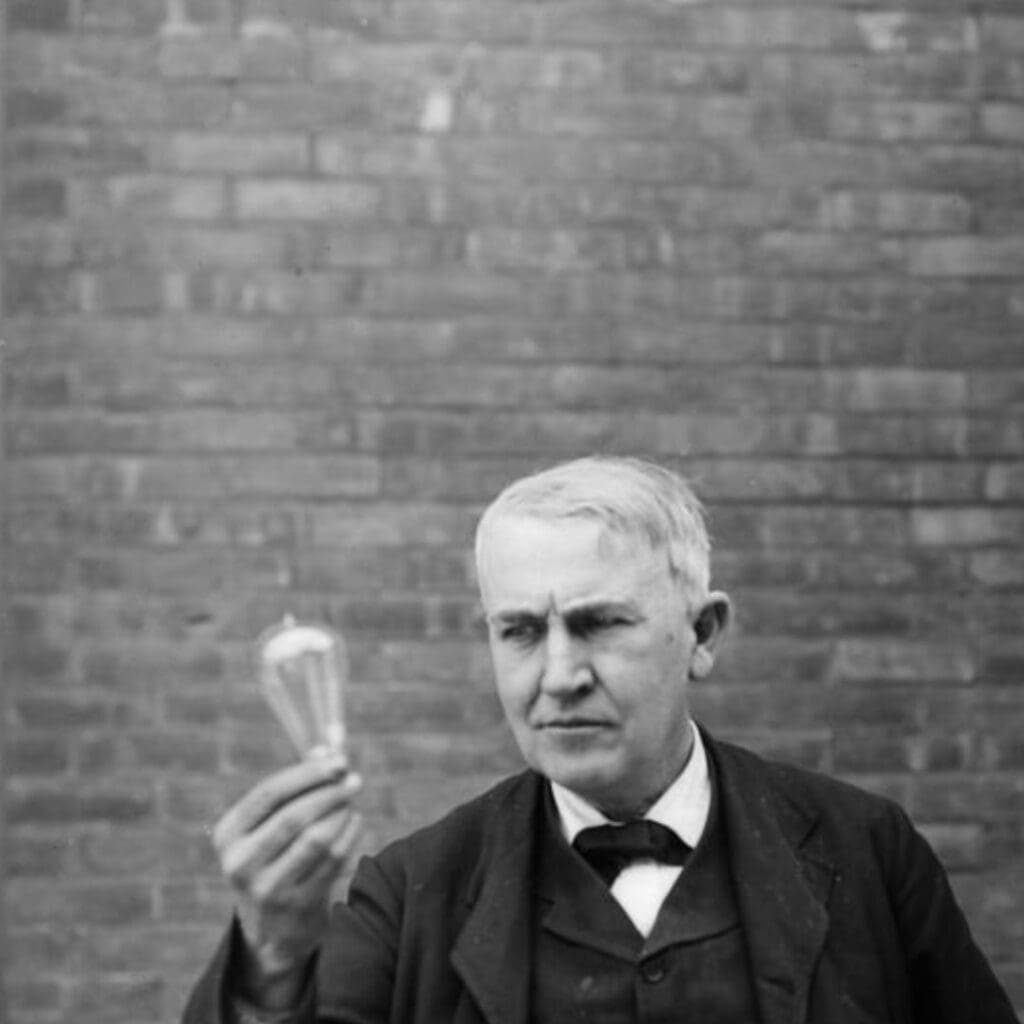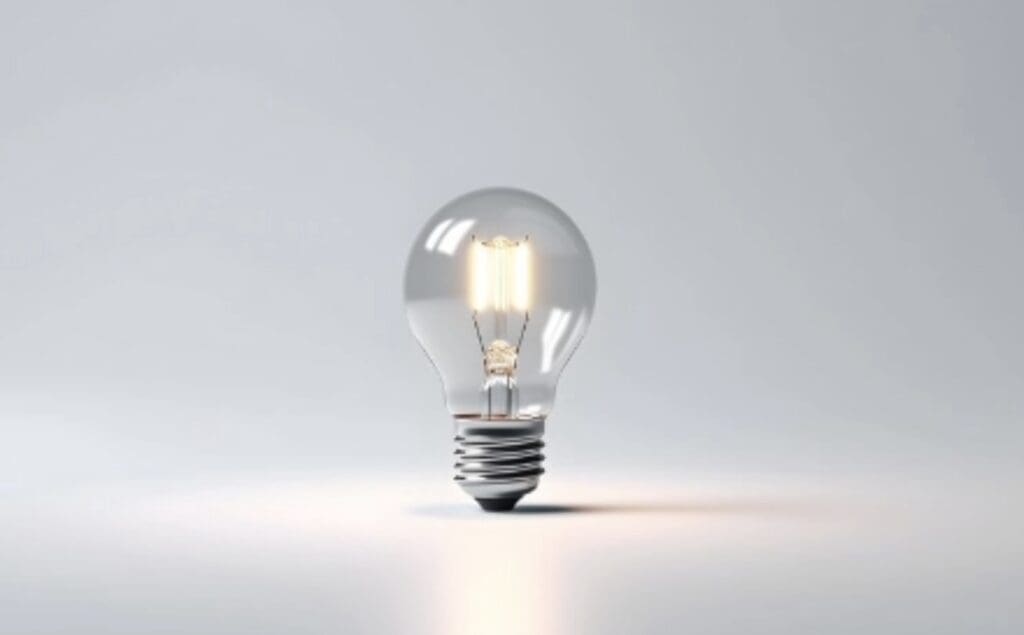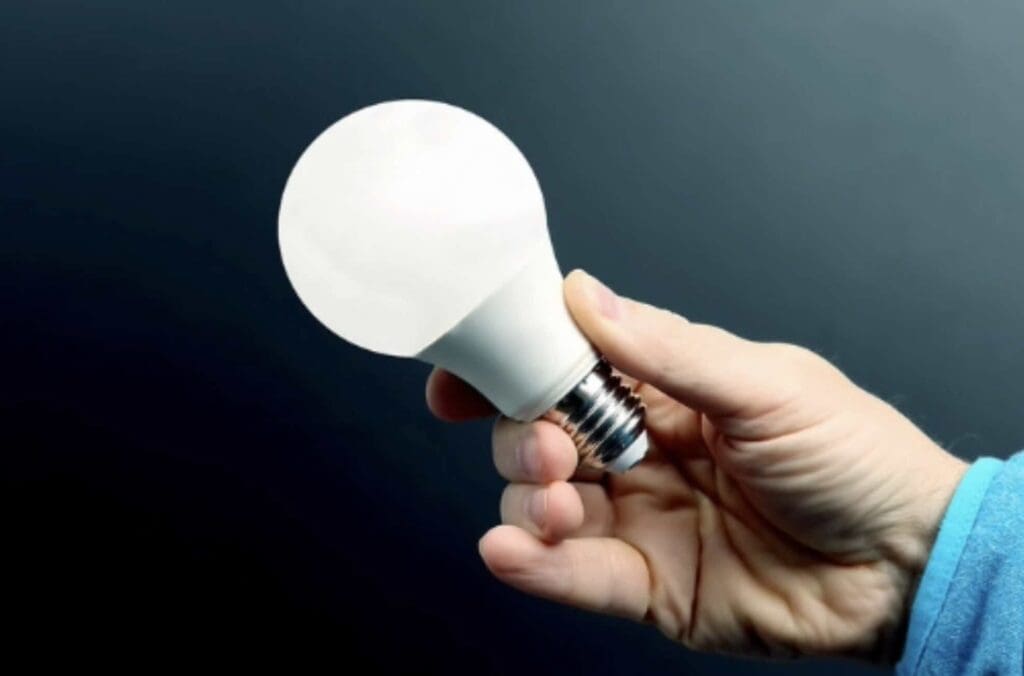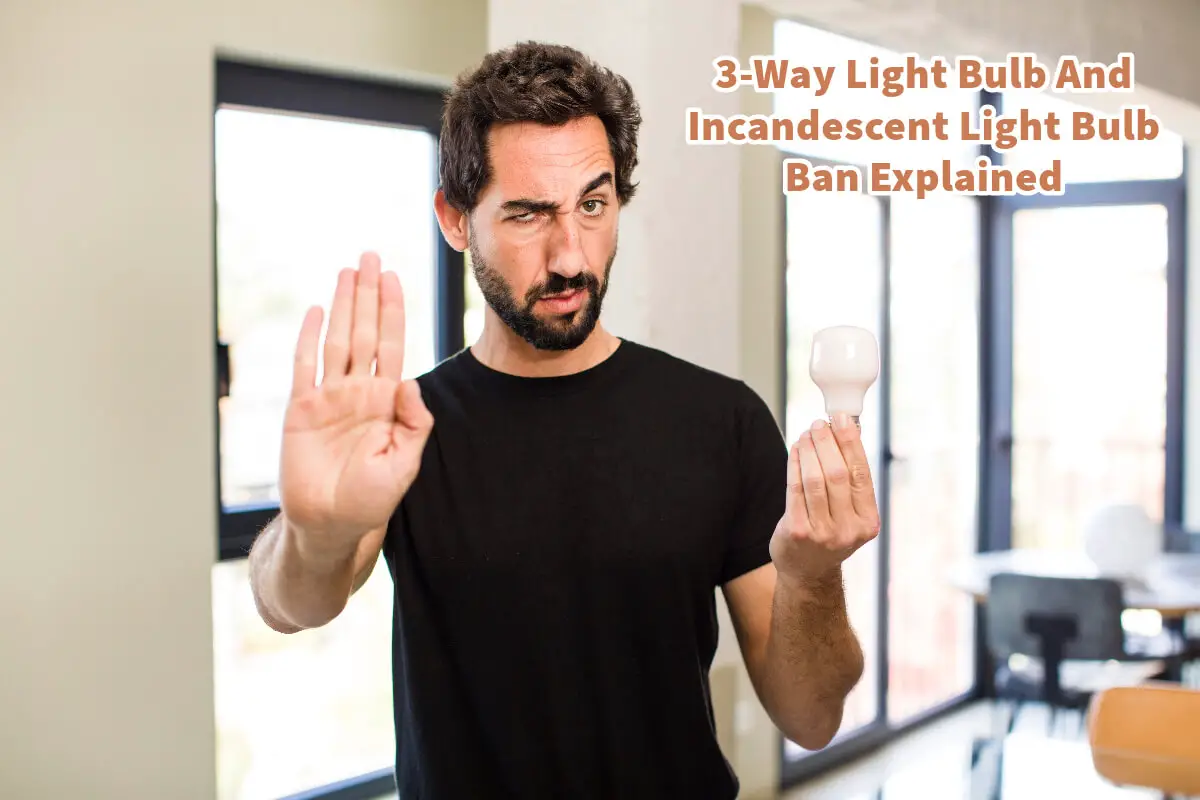If you’ve embarked on a quest to find a three-way bulb, you’ll discover that the familiar incandescent variety has become elusive.
This isn’t a mere matter of shifting market preferences; incandescent bulbs, in all their nostalgic glory, are no longer legally available for sale in the United States. Venture into any store, and their shelves won’t hold this relic of the past. Instead, the LED (Light Emitting Diode) reigns supreme, accompanied by other modern lighting alternatives. Read on as we explore more about this ban on incandescent light bulbs.
Table of Contents
- The Dawn Of A New Era: Bidding Adieu To Edison’s Incandescent Lightbulb
- So Why This Transition Away From Incandescent Bulbs?
- The Shift To 3-Way LED Bulbs: A Bright Choice
- Illuminate Your World With Mondoro
- Related Content
The Dawn Of A New Era: Bidding Adieu To Edison’s Incandescent Lightbulb
In 1879, Thomas Edison made history by introducing the incandescent light bulb. Its warm, familiar glow has illuminated our homes, streets, and businesses for decades. But as of August 2023, the sun has set on this iconic piece of history.

The “standard” incandescent bulb, the one most of us think of when we imagine a light bulb, is no longer available for legal sale in the United States.
While you can still use and install these bulbs if you have them, their days on the shelves have ended, marking a monumental shift toward energy-efficient lighting solutions, primarily LED and fluorescent bulbs.
So, if you have the bulbs and decided to buy up stock to use them, you can still legally use the incandescent bulbs in any of your lamps, but you will not be able to purchase them in the store nor see them on the store shelves.
The Incandescent Bulb Ban Is Not All-Encompassing
However, the ban isn’t all-encompassing. There are several exceptions to the rule, allowing a variety of unique incandescent bulbs to remain on the market—these range from appliance and colored lamps to specialty MR and traffic signal lamps, among many others.
While these specific bulb types continue to have their place in niche applications, the general-purpose Edison incandescent bulb’s era is fading away.
So Why This Transition Away From Incandescent Bulbs?
The push for LEDs comes from a solid commitment to energy efficiency and environmental preservation. The LED bulb is, in many ways, the superior successor to Edison’s invention.
LED Bulbs Vs. Edison’s Incandescent: A Brighter Future
The incandescent light bulb, conceived by Thomas Edison in the late 19th century, was undeniably revolutionary. It transformed the nocturnal landscapes of cities and made evening reading and work more accessible to everyone.

However, as with many groundbreaking inventions of the past, the time comes for evolution. The LED (Light Emitting Diode) bulb represents this next step in the history of illumination.
But what makes the LED superior to Edison’s incandescent light bulb? Let’s shine a light on the reasons:
Energy Efficiency:
Perhaps the most compelling advantage of LED bulbs is their exceptional energy efficiency. Incandescent bulbs release over 90% of their energy as heat, making their light-producing efficiency relatively low. In contrast,
LEDs utilize most of their energy for light production. An LED bulb can produce the same amount of light as an incandescent while using up to 85% less energy.
Longevity:
The average incandescent bulb has a lifespan of about 1,000 hours. LED bulbs, on the other hand, can last up to 25,000 hours or more. This extended lifespan means fewer replacements and fewer bulbs end up in landfills.
Durability:
Edison’s bulb contains a fragile filament that can break if dropped or bumped. LEDs, being solid-state lights, are more rugged and can better withstand shocks, vibrations, and external impacts.
Cooler Temperature:
Incandescent bulbs can get exceptionally hot, posing burn risks and, in some cases, fire hazards. LEDs remain cool to the touch, even after extended use, reducing such risks.
Eco-friendly:
Incandescents produce more greenhouse gases because they use more electricity. Furthermore, LED bulbs don’t contain harmful elements like mercury found in other lighting solutions, making them safer for the environment.
Size And Flexibility:
LEDs are versatile. They can be miniaturized and are adaptable to various lighting applications that incandescent bulbs cannot achieve. This adaptability allows for innovations in design and function.
Instant Light:
While some energy-saving bulbs take a few moments to reach full brightness, LEDs light up instantly.
Color Range:
LED technology allows for many light colors, from the warmest yellows to the coldest blues, without gels or filters. This capability enables mood and atmosphere settings in a way Edison’s bulbs can’t.
Dimmability:
Modern LEDs can be dimmed, providing even greater flexibility in lighting and further energy savings when full brightness isn’t required.
Directional Lighting:
Incandescent bulbs radiate light (and waste energy) in all directions. In contrast, LEDs can be designed to emit light in specific directions, making them perfect for task lighting and spotlighting.
While Edison’s incandescent bulb was revolutionary and served society for well over a century, it’s evident that the LED bulb carries multiple advantages. It isn’t just about technology superseding its predecessor but about embracing better solutions for consumers, the environment, and the future.
As we gravitate towards sustainable living and energy conservation, the LED bulb stands out as the luminary beacon leading the way.
Why LED Is The Future?
The U.S. Department of Energy praises LED (light-emitting diode) technology, championing it as the potential game-changer for the country’s lighting future. When you compare LED to incandescent, the benefits are crystal clear:

Energy Efficiency:
Residential LEDs consume at least 75% less energy than their incandescent counterparts. They’re an astonishing six times more efficient, with the capacity to produce 75-100 lumens per watt.
Longevity:
Imagine changing a light bulb and not touching it again for years. That’s the promise of LED. These bulbs can last up to 40 times longer than traditional incandescents, translating into savings over time.
Durability:
LEDs are sturdier and capable of withstanding jolts, shocks, and vibrations – an attribute incandescents can’t match.
Cost-effective:
Fewer replacements mean lower maintenance costs. While the initial investment may be higher, LEDs pay for themselves in the long run.
Eco-friendly:
Goodbye, toxic elements! LEDs are clean, without harmful components, making disposal more accessible and environmentally sound.
Additionally, LEDs Offer Other Remarkable Advantages:
- Zero UV Emissions: Perfect for sensitive spaces like museums and art galleries, LEDs don’t emit ultraviolet light, preventing damage to heat and UV-sensitive items.
- Design Flexibility: The range of available LED colors and brightness levels, combined with their diminutive size, opens up innovative lighting possibilities.
- Performance In Extreme Temperatures: LEDs operate efficiently, unaffected by temperature extremes, whether it’s a chilly winter night or a blistering summer day.
- Superior Light Dispersion: LEDs can be designed to emit light more precisely in desired directions. This can lead to better light schemes with fewer energy resources.
While the nostalgia tied to the warm glow of Edison’s bulb is undeniable, progress beckons. As we transition to LEDs, we’re not just adopting a new technology but embracing a more sustainable, eco-friendly, and efficient future.
The Shift To 3-Way LED Bulbs: A Bright Choice
The 3-way light bulb is a familiar item for many homes and offices. It offers the convenience of having three distinct brightness levels in a single bulb, perfect for versatile lighting needs.
Historically, these bulbs were incandescent, but that’s no longer true today. The move towards sustainability and efficiency has ushered in a new era, with LED technology at the forefront.
If you’re in the market for a 3-way light bulb now, you’ll find that the LED version is available and the preferred choice.
So, the next time you need a 3-way bulb or any other lighting solution, consider LED. While Edison’s genius invention illuminated the 20th century, LEDs are poised to shine even brighter in the 21st. In making this change, we honor the past’s innovations while championing a brighter, more sustainable tomorrow.
Illuminate Your World With Mondoro
At Mondoro, we pride ourselves on harnessing Asia’s vibrant craftsmanship and technological expertise. We craft export-quality UL lamps that meet and often exceed global standards. Our commitment to quality ensures that every lamp produced under our care is a testament to superior design, durability, and functionality.
Are you curious about how we can assist with your lamp manufacturing needs? We’re eager to discuss the possibilities when you collaborate with us. Reach out, and let’s embark on a luminous journey together. Your vision, our expertise – together, we’ll shine brighter.
If you want to see how Mondoro can help you with your Ul Certified lamp needs, we would love to talk to you about how we can help you.
Find out more about how Mondoro can help you create, develop, and manufacture excellent home decor and furniture products – don’t hesitate to contact me, Anita. Check out my email by clicking here or become a part of our community and join our newsletter by clicking here.
Mondoro gives out a FREE Lookbook to anyone interested. You can receive a copy of our latest Lookbook by clicking here.
Listen to our Podcast called Global Trade Gal. You can find it on all major podcast platforms. Try out listening to one of our podcasts by clicking here.
Subscribe to our Mondoro Company Limited YouTube Channel with great videos and information by clicking here.
Related Content
What Is The Difference Between LED, CFL, And Incandescent Light Bulbs?
There can be a little bit of confusion about the difference between an LED or incandescent bulb and which light bulb is the most energy-efficient one to use.
You can discover more by reading What Is The Difference Between LED, CFL, and Incandescent Light Bulbs? by clicking here.
What Are The Standard Light Bulb Base Socket Types And Sizes?
It can get quite confusing when considering different types of light bulb socket bases. Many people get confused about the different numbers used for each light bulb base and their meanings.
You can discover more by reading our blog, What are the Standard Light Bulb Base Socket Types and Sizes? by clicking here.
Meaning Of The Incandescent Wattage Sticker On Your Lamp Socket
The incandescent wattage warning sticker on your lamp socket helps inform consumers what wattage lightbulb they can safely use for their lamp. The sticker also indicates that the lamp has been tested up to the UL or ETL standard for the amount of wattage listed.
You can discover more by reading our blog Meaning Of The Incandescent Wattage Sticker On Your Lamp Socket by clicking here.

